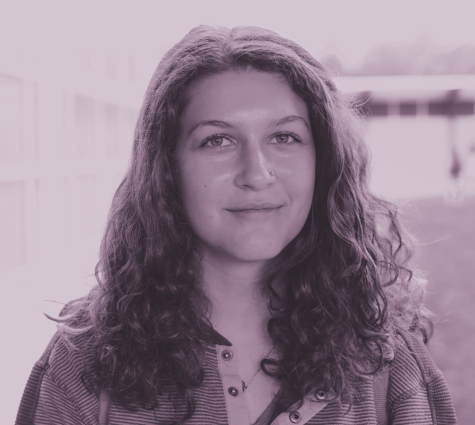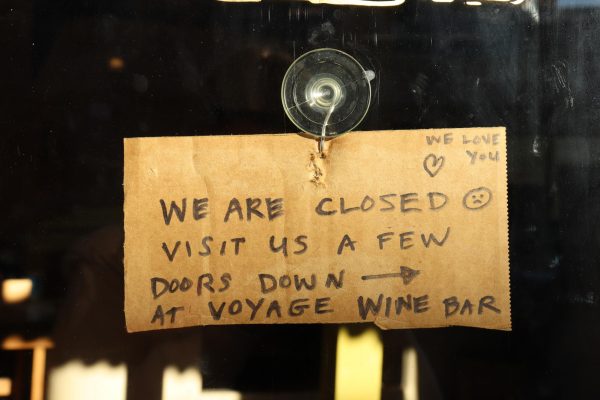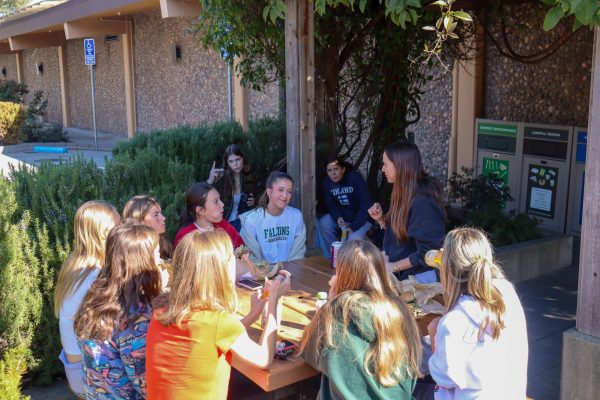Hid(e)-in imaginary friends seek out social intelligence in children
Seven-year-old Edward Mack, who plays boardgames and has conversations with imaginary friends.
When a young child begins to develop imaginary friends, parents may worry that their relationships are insufficient substitutes for human connections. However, imaginary friends have proven to be beneficial in supporting children’s developing social skills, and are a general indication of a healthy imagination.
A North Carolina-based Pediatric Counselor Katie Lear works with the topic of imaginary friends and their effect on mental health for an international audience. According to Lear, children between three and five years old are most susceptible to the establishment of imaginary friends.
Imaginary friends come in all shapes and sizes. Some children compose intricate characters of their own volition, while others find counterparts in their favorite superheroes, fairytale characters, or animals. According to Lear, bonds created between a child and their imaginary friend tend to dissipate when the child reaches the age of eight or nine.
Imaginary friends come hand in hand with social developments, and express a child’s emerging sense of social awareness. A study from the University of Berkeley’s Kidd Lab, which specializes in pediatric physiology, demonstrated that imaginary friends allow children to grasp the wants and needs of others, as well as how to procure a response to an array of emotions.
According to The Atlantic, imaginary friends allow children to find creative ways to pass time. Seven-year-old Edward Mack, who lives in Alameda County, finds company through playing with his cousins when they aren’t present.
“Edward will play board games with them, or just hold conversations,” said Edward’s mother, Porshia Mack. Edward confirmed this with a shy “yes.”
These types of social interactions constitute a child’s grasp on how to hold social conversations, alongside deciphering moods. Some imaginary friends promote positive actions, while others provide children with a scapegoat that can be used to cover their accidents or wrongs by blaming their imaginary friend.
Through interaction with his imaginary friends, Edward will learn tactics such as sharing and how to hold a conversation. A study published by Psychology Today found that simply holding conversations, especially with older imaginary friends, can help build vocabulary.

At the age of five, AWHS junior Xenia McLean played with a dragon named Ashley.
“We would do normal things together, she would accompany me on family trips, or even just keep me company while climbing trees,” Xenia said.
Among the 65 per cent of seven-year-olds who reported having an imaginary friend to Kidd Lab, they developed most commonly in only children, a phenomenon thought to be explained by the lack of social development provided by siblings. Xenia proves to be an example of this phenomenon, growing up as an only child.
While these are minor cases in which a child finds a companion for simplistic tasks, imaginary friends can also permeate in an attempt to address more dire psychological needs. According to Psychology Today, imaginary friends can help children get through more difficult and complex experiences such as divorces or physiological trauma. In these instances, imaginary friends appear in order to block out traumas by distracting the child.
However, not all children have imaginary friends, such as junior Brianna Thomsett, whose friends existed outside her mind growing up.

“I feel like people who’ve had imaginary friends might have had a more active imagination and that’s really cool because as we grow up, we stop imagining things that aren’t physically possible,” Brianna said.
In a way Brianna is correct. According to a 2008 study from the Psychology Journal, imaginary friends are creative outlets and allow children to express themselves through their imagination. However, according to Dr. Samantha Rodman, a clinical psychologist outlined in the Psychology Journal, imaginary friends do not prove that a child is any more creative or cognate than a child without an imaginary friend.
Sam Heffernan, an 11-year-old from San Rafael, has grown up without the development of imaginary friends. Coming from a large family, he had consistent access to social stimulation with other children.
“Imaginary friends shouldn’t be real…because they will say bye and you will never see them again,” Sam said.
Imaginary friends come in all shapes and sizes; from playmates to physiological assistants, they are a cornerstone of many adolescents and allow children to gain social awareness. And while some children don’t need to develop these friendships, ageless adventures are on the horizon for those who do

Aler Giffin is a senior at Archie Williams High School and has been a part of the journalism program for three and a half years now. In his free time he...

Jasmin is a senior, in her third year of journalism. She enjoys eating grapes and pretzels at the same time. You can often find her listening to Bad Bunny...







